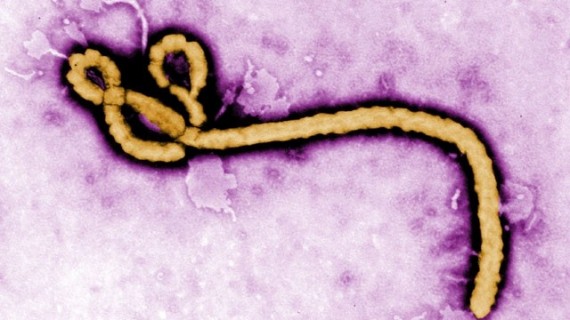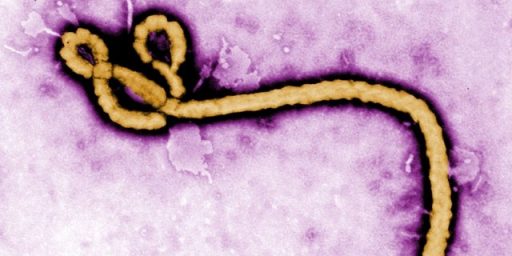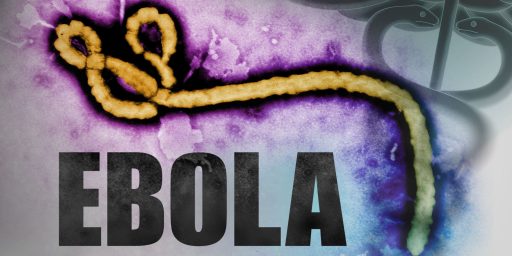Ebola Infection Rate In West Africa Dropping
The World Health Organization reports that the Ebola infection rate in West Africa appears to be dropping:
GENEVA — The number of people falling victim to the Ebola virus in West Africa has dropped to the lowest level in months, the World Health Organization said on Friday, but dwindling funds and a looming rainy season threaten to hamper efforts to control the disease.
More than 8,668 people have died in the Ebola epidemic in West Africa, which first surfaced in Guinea more than a year ago. But the three worst-affected countries — Guinea, Liberia and Sierra Leone — have now recorded falling numbers of new cases for four successive weeks, Dr. Bruce Aylward, the health organization’s assistant director general, told reporters in Geneva.
Liberia, which was struggling with more than 300 new cases a week in August and September, recorded only eight new cases in the week to Jan. 18, the organization reported. In Sierra Leone, where the infection rate is now highest, there were 118 new cases reported in that week, compared with 184 in the previous week and 248 in the week before that.
Speaking just after a visit to the region, Dr. Aylward said on Friday that the “really substantial reduction” in new cases was a direct result of last fall’s vast buildup of resources for fighting the epidemic. “This is the first time that the countries were in a position to stop Ebola,” he said.
President Ernest Bai Koroma of Sierra Leone announced on Friday that the country was lifting the travel restrictions that it had imposed in an effort to contain the virus. “Victory is in sight,” Mr. Koroma said.
Dr. Aylward cautioned that “the things that have been driving the reduction so far will not get us to zero,” and that health authorities do not yet have the spread of the disease completely under control.
The good news about falling infection rates also bore a danger, Dr. Aylward said: Pledges of international financial support for the Ebola response were falling, as well. He said that $1.5 billion was needed to fight the disease for the next six months, but that only $482 million had been committed so far. Most of those pledges were made last year.
Given some of the projections of where we might be at this point that were being made in the fall, this is most certainly good news. The fight seems to be far from over, though, and the obvious danger is that this apparent temporary success will cause people to think the fight is basically over.




We can only hope. New cases are still being reported which means that the epidemic isn’t over.
Based on the WHO’s figures there have been just about 500 new cases every week every week for the last six weeks. Some weeks more, some less. What’s happening depends somewhat on whether the margin of change is greater than the margin of error.
The epidemic might be waning or the disease might have become endemic at the present level. It’s too early to tell.
I watch CNN and I’m pretty sure the Ebola epidemic ended months ago.